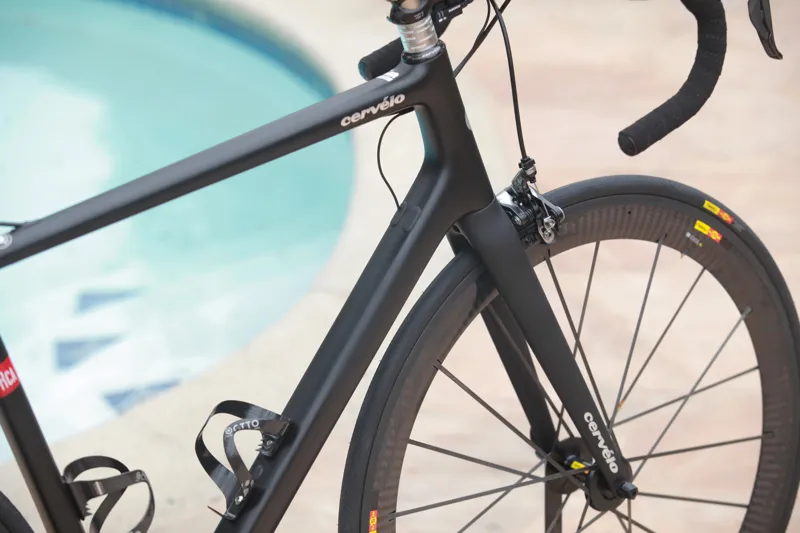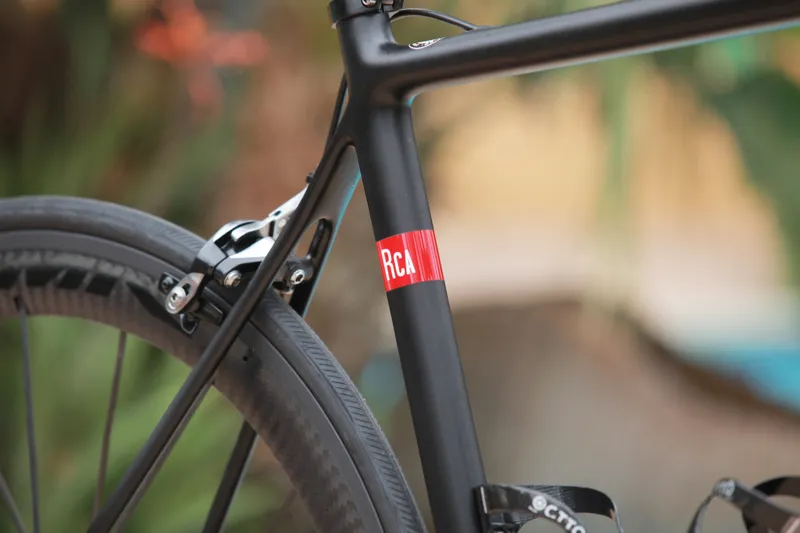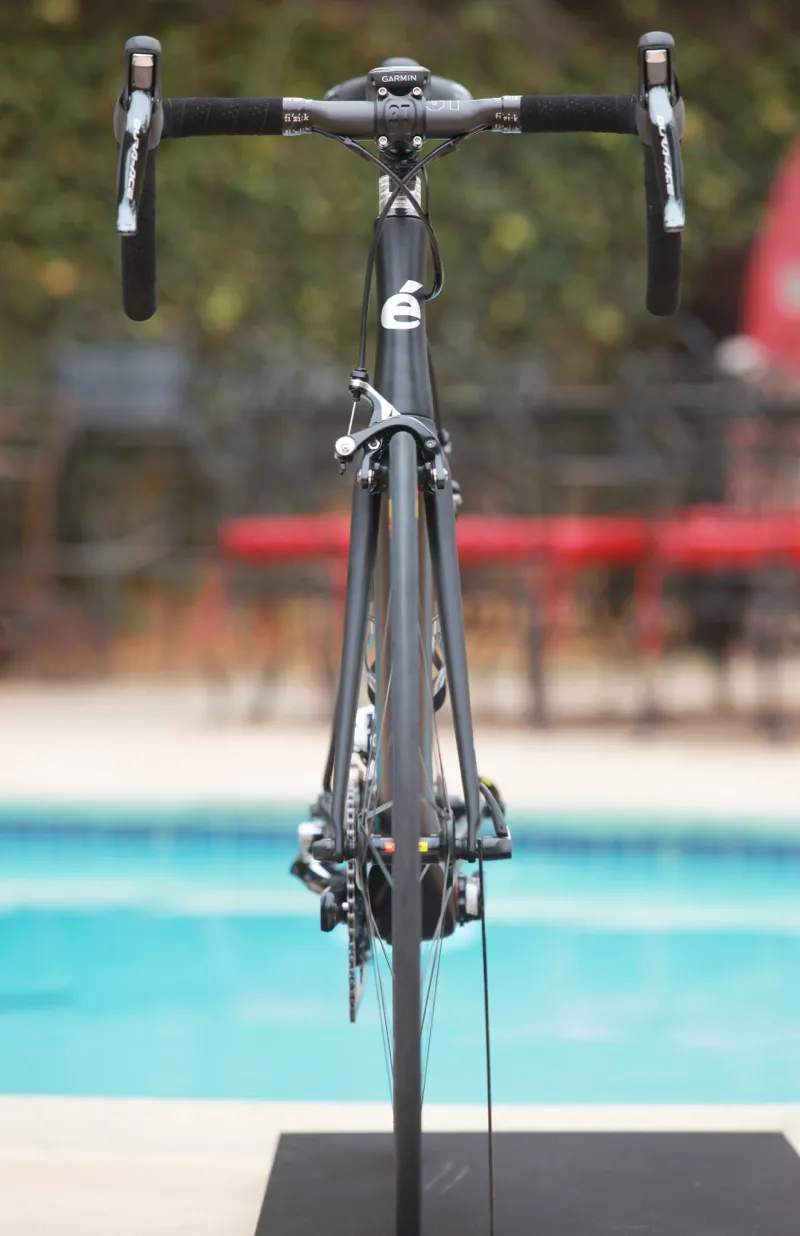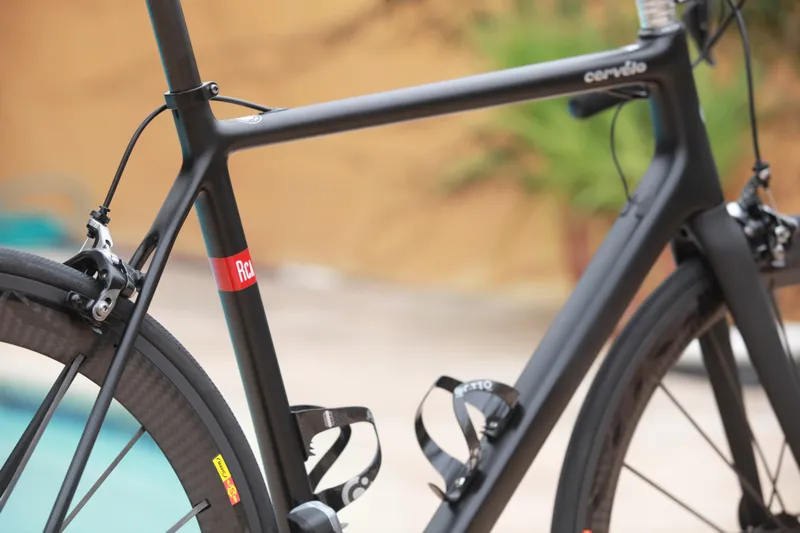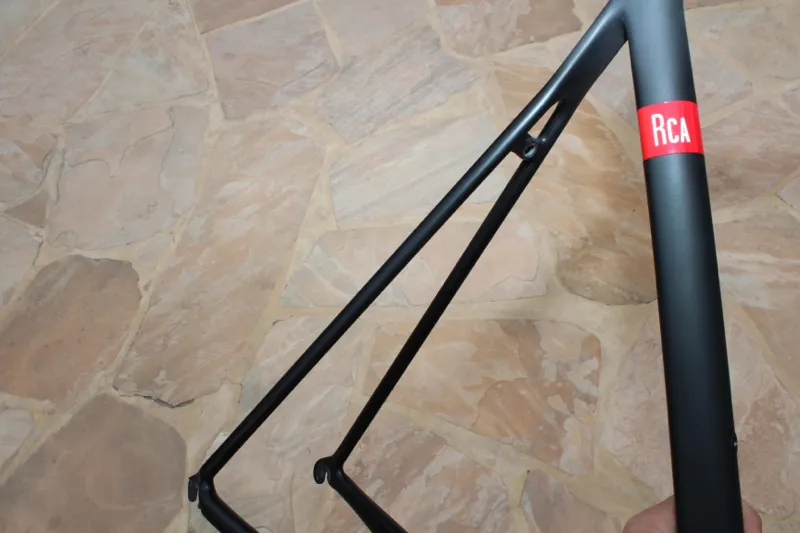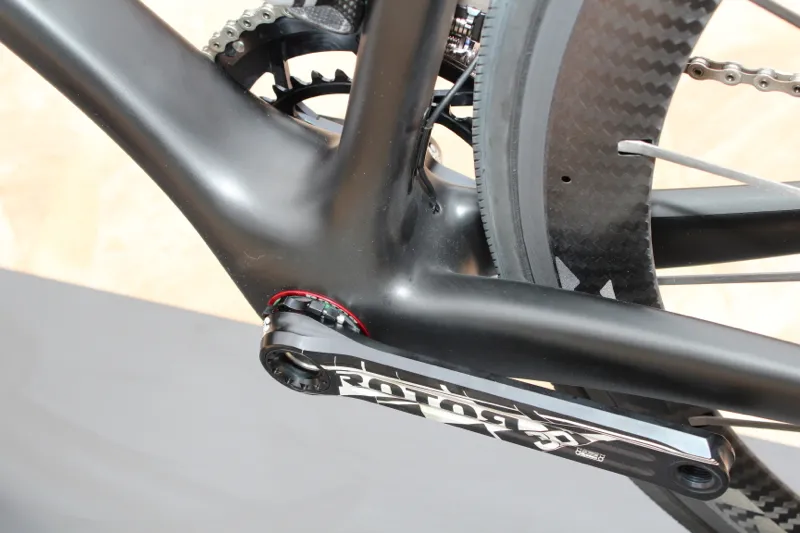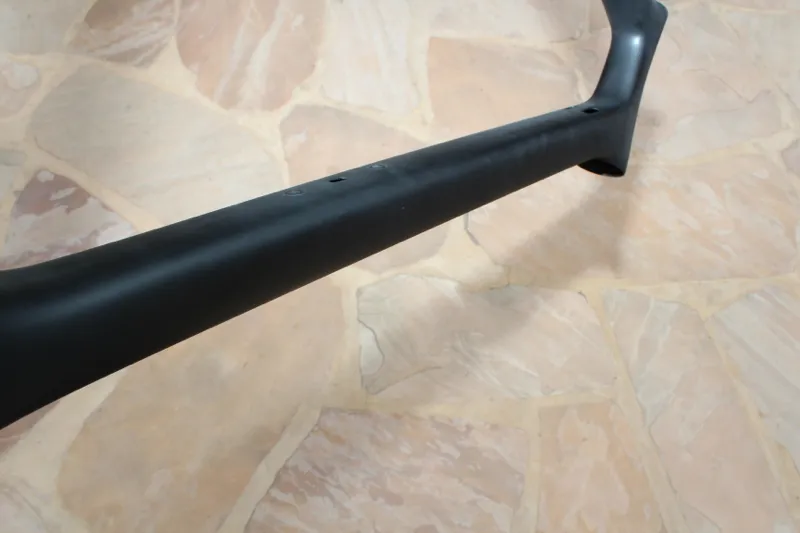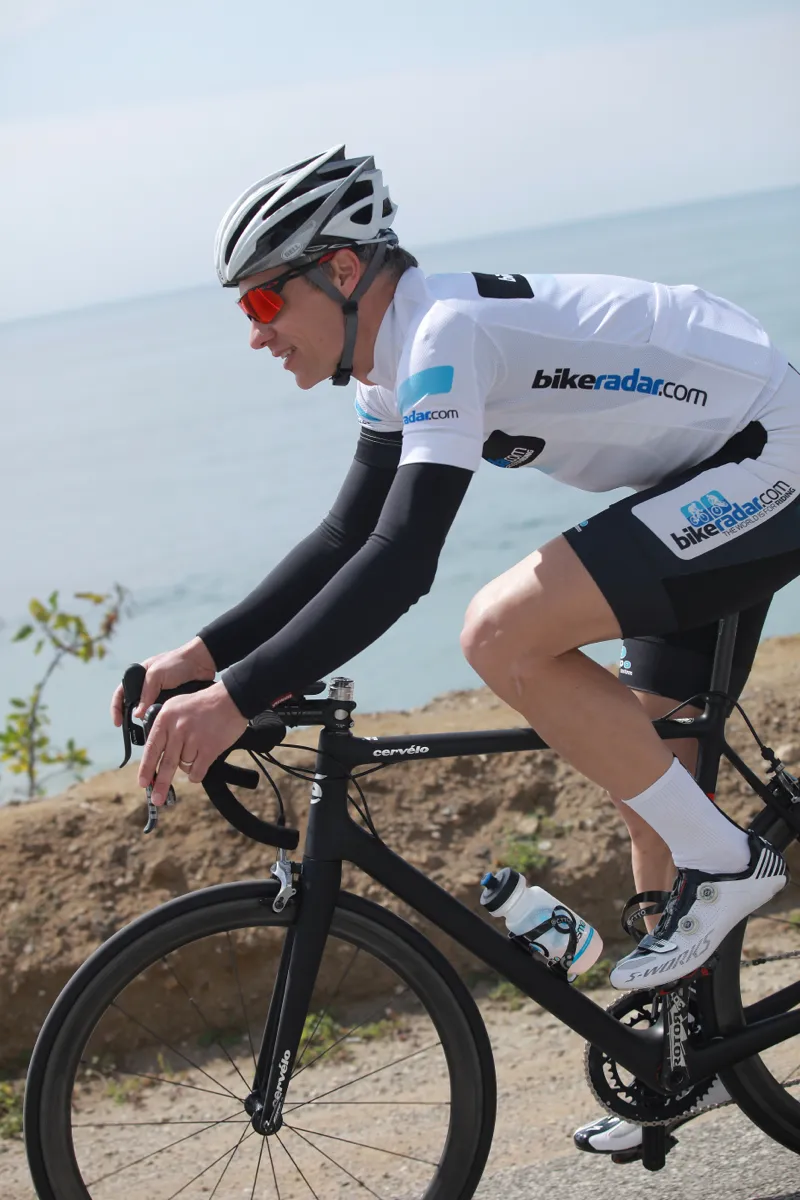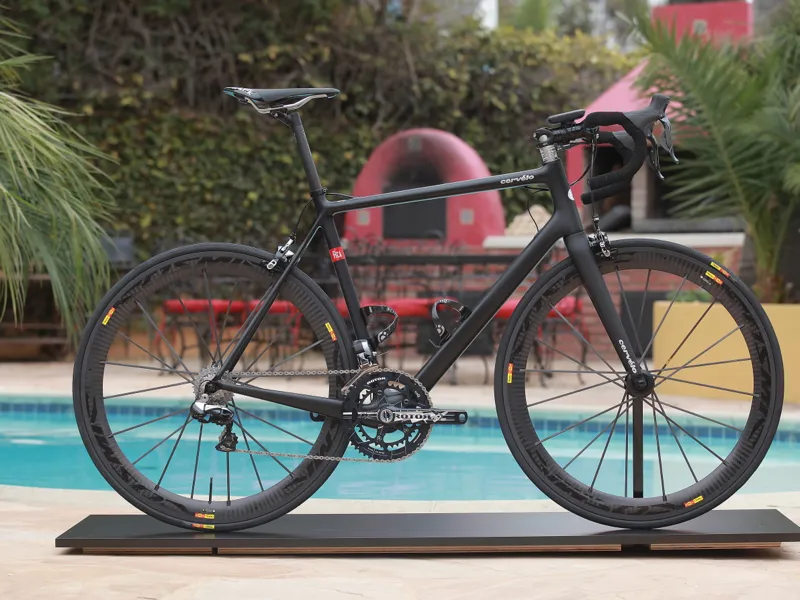Keith Bontrager was credited years ago with coining a phrase about bikes and bike parts: "Light, strong, cheap; pick two." By obliterating the third option, Cervélo engineers pursued the outer limits of frame design with the new Rca, a 667g frame with incredible stiffness and an eye-watering price tag of US$10,000.
Even at that price, the limited-run Rca will not be profitable, claimed company CEO Phil White, given the time invested in development and the cost of materials. "We're only going to sell 325 of these, but we're going to learn a lot from this," he said. "This is a concept bike from which we take our learnings and apply them to the rest of the line where we can."

The integrated power-meter magnet could appear in other frames
The Rca builds on Cervélo's R5ca, another US$10,000 frameset that barely tipped the scales at 696g and which Garmin-Sharp's Ryder Hesjedal raced to victory at the 2012 Giro d'Italia. For the 2013 iteration, Cervélo sought to make it lighter still while keeping the stiffness and enhancing the aerodynamics.
Hesjedal told BikeRadar that he will race the Rca as his main bike this season.
Cervélo is a Canadian company based in Toronto, and the 'ca' moniker is a nod to the collaborations with California contractors Criterion Composites, whose founder Don Guichard's carbon experience goes back to building gold-medal-winning disc wheels for the 1984 Olympics.
David Killing served as lead designer for the bike, heading up the collaborations between structural engineers and aero designers.
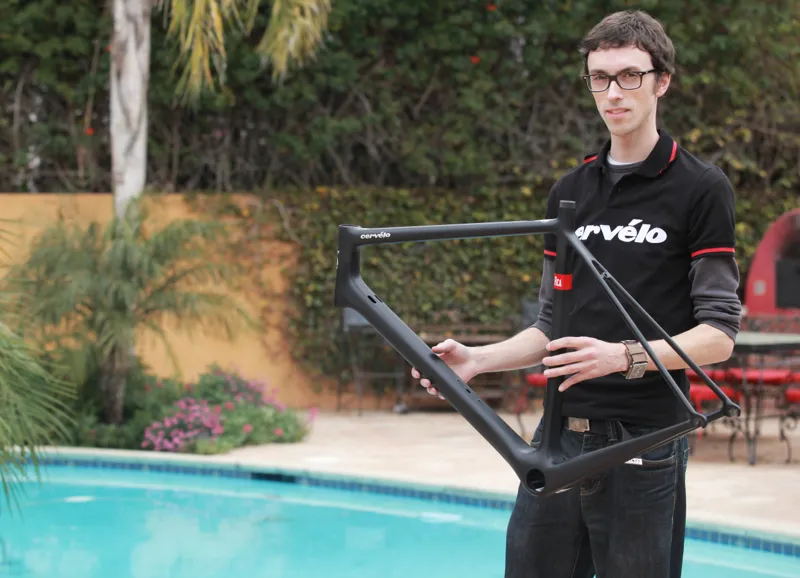
Designer David Killing and his team's 667g masterpiece
Cervélo laid out 15 frame parameters to test, and cooked up 93 (digital) frame designs on which to test them. Then Cervélo ran 279 Finite Element Analysis tests on these before setting on physical prototype designs. Each of the 400 plies of carbon used in the design were studied individually.
While there were no major overhauls to the shape compared to the R5ca (and the geometry remains the same as for Cervélo's R series), the Rca does have some new technology, including two new materials, a 'Squoval 3' tube shape and hollow carbon dropouts.
Also, an integrated magnet for power meters, while not rocket science, is certainly a more elegant solution than having a rider glue a magnet on to the outside of a frame.
New materials: Integran/PowerMetal Nanovate and 3M Powerlux
The Rca steerer tube is coated in a very thin layer of nickel to better handle clamping forces. How thin? Nano thin; Cervélo claims the PowerMetal Nanovate layer is a thousand times smaller than a typical plating grain, and yet its yield strength is seven times that of conventional nickel. The fork weighs less than 300g, Cervélo says.
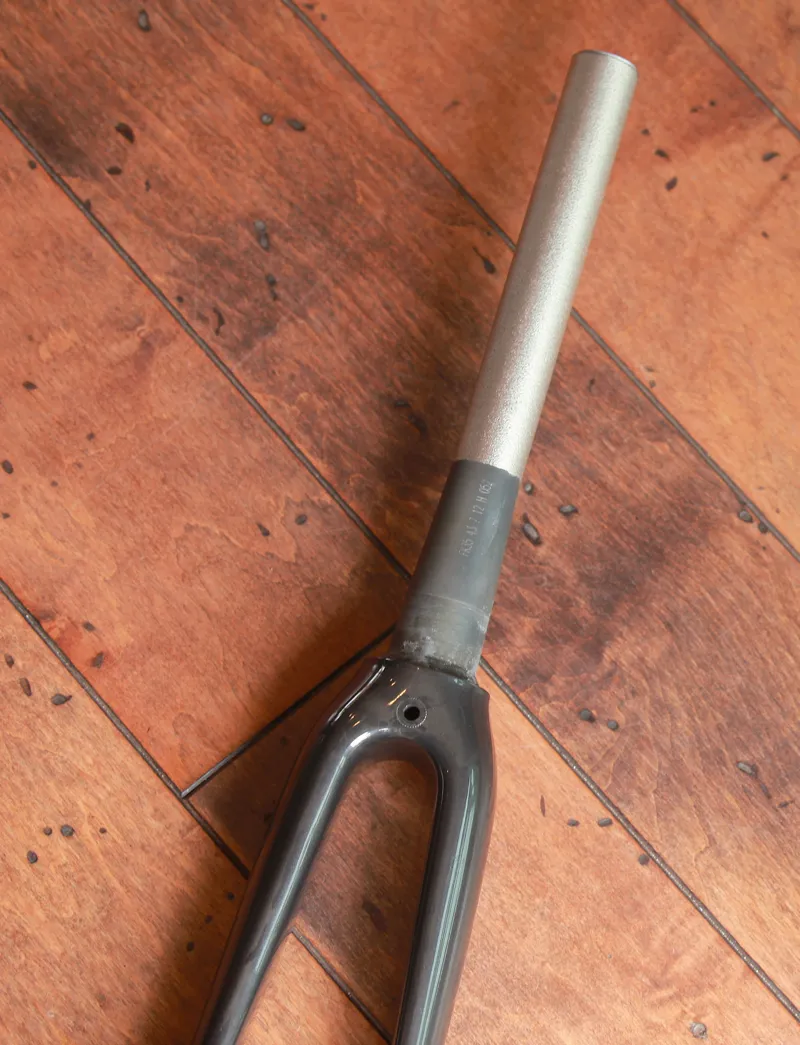
A nano-nickel coating is applied to the tapered steerer to better handle clamping forces
White said that while many companies, including his, instruct mechanics and riders to use torque wrenches when tightening stems, he realizes that the reality of the situation is that many people just hand tighten without any real idea of torque.
Also, as George Hincapie demonstrated in the 2006 Paris-Roubaix, crashes can damage the steerer tube, causing delayed failures. Cervélo looked at how to avoid just that. "We published a test protocol for any company in the industry, on how to pre-damage a steerer and then fatigue it," White said.
In any event, strengthening carbon steerers cannot be a bad thing, and hopefully this technology A) is sound and, if so, B) makes its way to other models.
3M Powerlux is a nano-silica-filled resin that improves shear and compression strength.
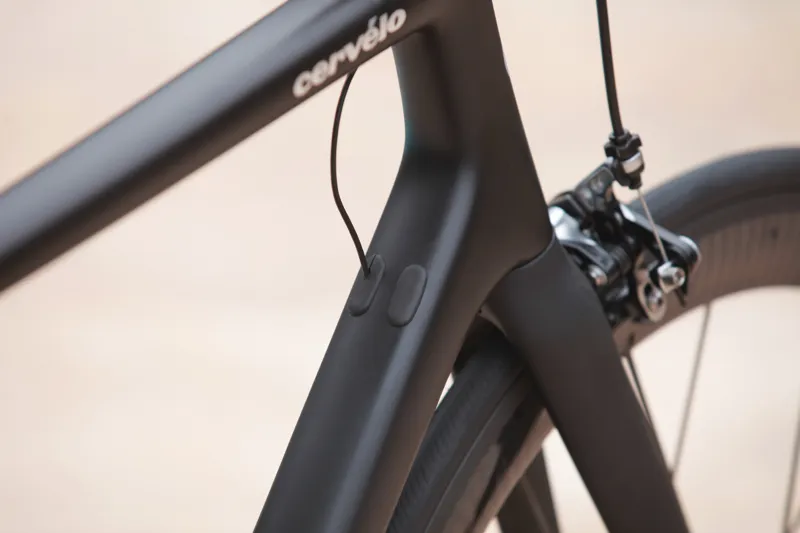
3M Powerlux, new to the bike industry, is used at critical junctures
"It is particularly useful in places where you have to have compression strength, like the area behind head tube," White said. "Compared to more common nano-rubber-filled epoxy resins, which increase toughness at the expense of interlaminar shear strength and compression strength, 3M’s new resin system improves all three properties."
It is also a wildly expensive resin, to the tune of seven times more than anything else Cervélo uses, so the Rca employs it in only a few areas.
New shapes: Squoval 3 and hollow dropouts
The Squoval 3 is basically Cervélo's squarish tube with a nose cone added to the front to reduce drag. Although Cervélo wouldn't describe it this way, it looks like Scott Foil's basic tube shape. The Squoval 3 maintains the squarish look, with more material on the sides than the top and bottom, a feature Cervélo calls SmartWall and has used since it was making aluminum bikes.
The lower down tube, head tube and seat tube were tweaked for better aero profiles, and the seat stays – which are still a hyper-narrow 10mmx12mm – were turned 90 degrees towards the bottom.
The hollow carbon dropouts have the stays bonded into them, instead of the reverse. This saved 5g, and also allows for straight-shot internal cable routing, Killing said. Using a variety of plugs at the dropout as well as the down tube, the Rca is compatible with mechanical, electric and even the not-yet-available hydraulic options.
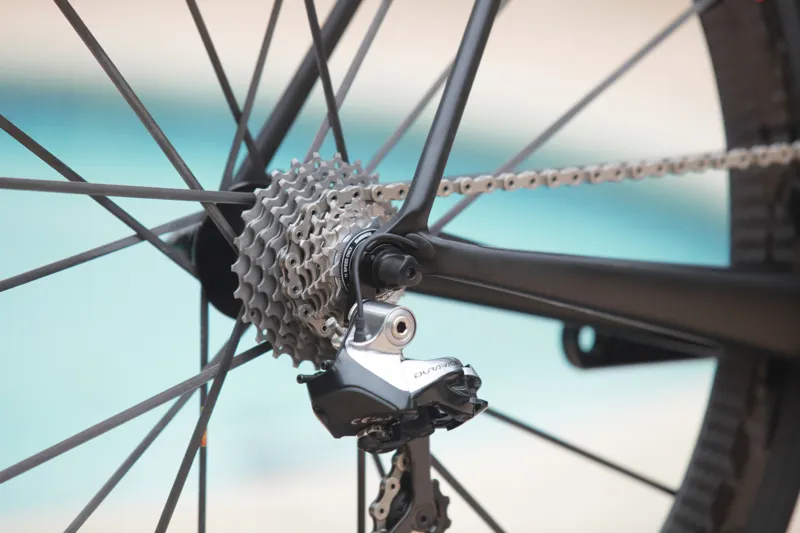
Plugs at the dropout and on the down tube can handle mechanical, electric or hydraulic cables
Performance claims
While clearly not an aero road bike, the Rca has made some gains on the R5ca. Cervélo claims that the new frameset has 7.4 watts less drag – going on the theory that watts are a tenth of grams of drag – than the R5ca. At the bike's launch, Cervélo also trotted out some charts showing the Rca as aerodynamically superior to competitors' road bikes, but omitted any aero road bikes and even Scott's all-rounder Foil from its comparisons.
Stiffness is a more straightforward characteristic, however, and more easily felt when riding. Like many frame-makers, Cervélo measures stiffness in two places, hoping to capture front-end performance and pedaling efficiency.
Front-end stiffness is usually calculated by weighting a bar through the head tube and measuring deflection, while pedaling stiffness is analyzed with a simulated pedaling load, a chain configuration and a deflection measurement at the bottom bracket.
Cervélo has tweaked these tests slightly, adding the fork into the mix instead of a steel bar, and locking the rear of the bike at the point the wheel would contact the ground instead of simply bolting it at the dropouts. Also, Cervélo loads the saddle with the weight of a rider for the pedaling efficiency measurement.
For the Rca, bottom bracket stiffness dropped by 3 percent from the R5ca, but front-end stiffness went up by 3 percent. And this was done while frame weight went down, to a claimed 667g in a size 54cm with paint, a water bottle cage and derailleur hardware.
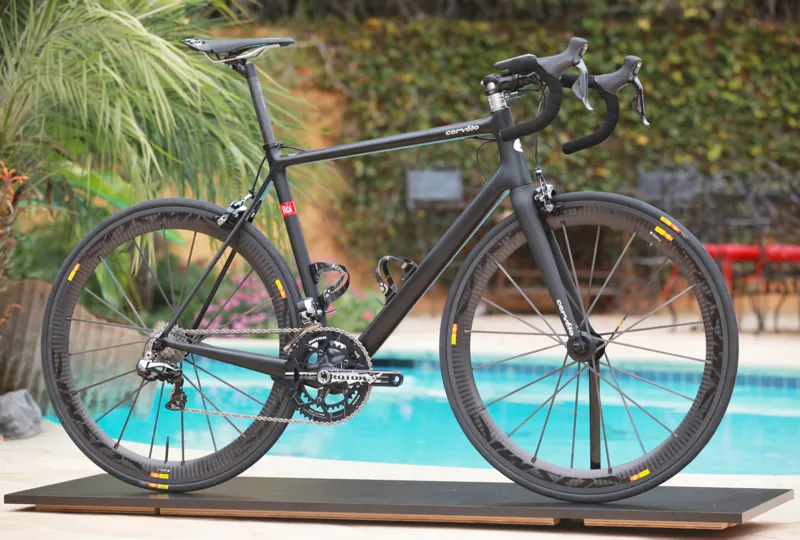
The Rca will be sold as a frameset — for US$10,000
First ride impressions
We had a chance to take the bike out for three hours, built up with new SRAM Red and Zipp 303 wheels. With Red being the lightest mainstream group out there, and the 303s weighing about 1,500g, the bike certainly passed the standard shop-floor 'wow' test of lifting and reveling at the weight. We were not able to weigh the bike – more on that later – but it's probably not UCI-legal in that configuration.
More importantly, the bike rides very well. We have ridden hyperlight frames that flex like wet noodles, and also piloted some hyper-stiff frames that seemed they could rattle out your fillings. The Rca rides like high-performance bike should – efficient, quick to accelerate, responsive and rock solid through corners.
The bike climbs well, but honestly our sensations there were from the frame's stiffness, not its weight. A 667g frame is fantastically light, but in the bike-plus-rider total weight package 100 or 200g is all but impossible to discern on feel. For instance, a full water bottle weighs about 650g.
The next time you're climbing, squirt out a few mouthfuls and see if you can feel a difference in your climbing speed. (For that matter, the next time you're holding a full water bottle, imagine a frame that weighs that much.)
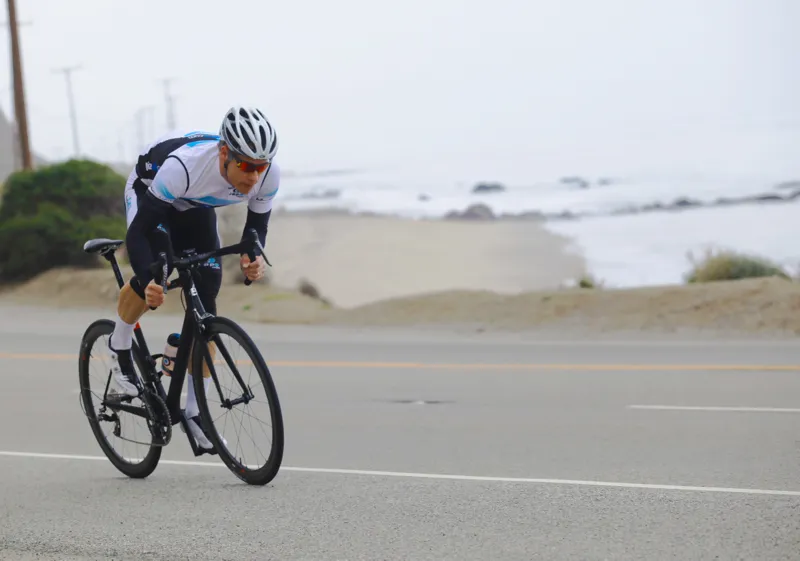
The Rca doesn't give an inch under acceleration
The geometry is standard Cervélo R series. The slightly taller-than-average head tubes might bother some racers, but the 173mm head tube on our 56cm test bike worked perfectly for us (at 6ft/183cm) with the stem slammed. As for aerodynamics, what marginal gains may or may not be there were lost on us.
BikeRadar will be getting more miles on the Rca, so watch for a full review with weights soon. But in the meantime we'll leave you with this: on the road, the Rca doesn't feel like a hyperlight frame; it simply feels like a great frame. And considering the price, it had better!
For more information see www.cervelo.com.
